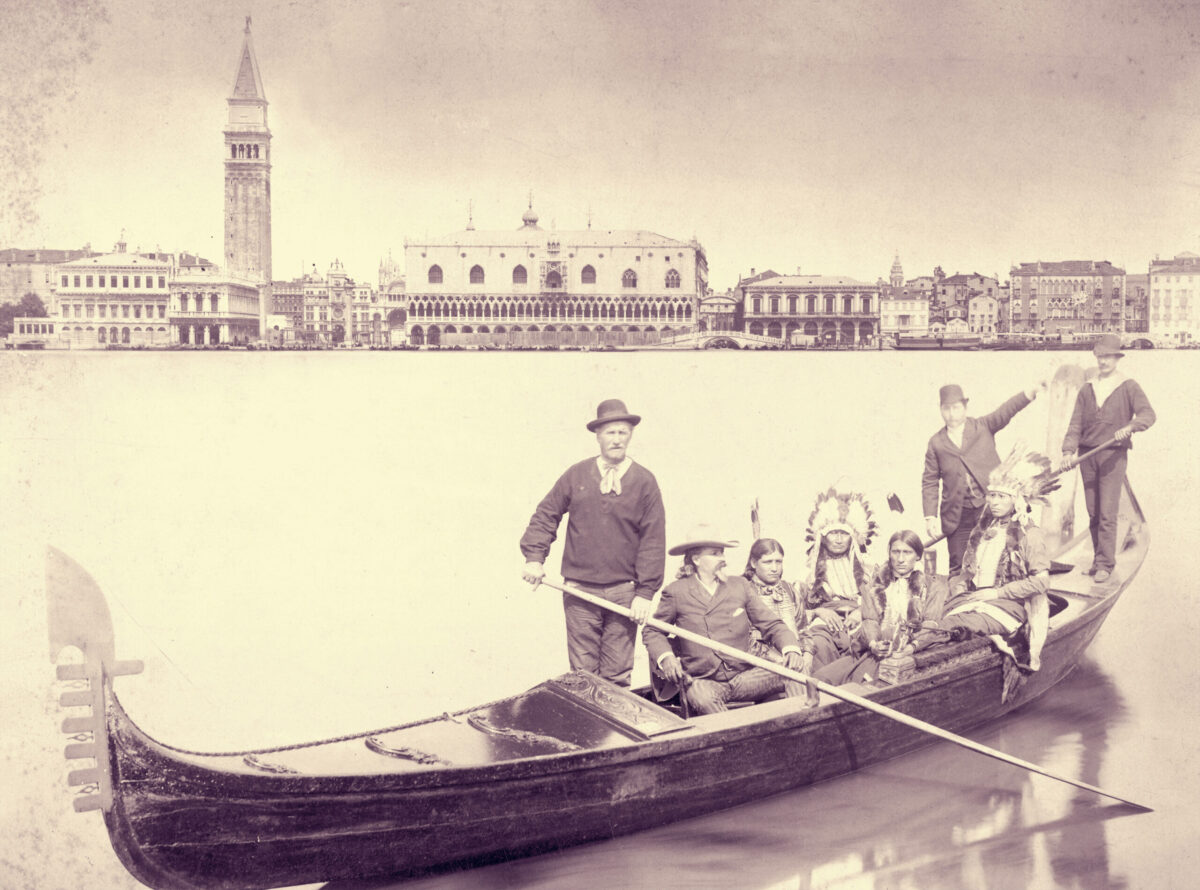To this day virtually everyone in the United States has heard of William Frederick “Buffalo Bill” Cody. Even those not expert or passionate about the Western frontier era recognize him as one of the most iconic figures of American history. Buffalo Bill also remains fairly well known throughout Europe, for the Iowa-born scout turned showman extraordinaire brought his Wild West across the Atlantic Ocean eight times—four times between 1887 and ’92, and four more between 1902 and ’06. In arenas across the Old World honored guests and paying patrons alike filled the stands to thrill at buckskinned cowboys taming wild horses, warbonneted Indians attacking stagecoaches, soldiers on horseback waging mock battles, and eagle-eyed women and men showing off their shooting prowess. Among the countries to embrace Cody was Italy.
Judging by period newspapers, photographs and the surviving statements of spectators, quite a few cities on the Italian Peninsula were afflicted by “fever of the West.” Buffalo Bill’s Wild West came to Italy twice—during his second European tour, in 1890, and during his third European tour, in 1906. The first time his caravan of wagons bearing hundreds of employees and animals made just six stops. Popular demand swelled the second tour to 119 performances in 37 towns. The basic ticket cost 2 lire, or slightly less than $11 in today’s currency. For the best seats one paid 8 lire, or about $45, not a paltry amount. Most venues hosted two shows a day—one in the late morning, another in the evening. Seldom was there an empty seat in the house.
On its first Italian tour Buffalo Bill’s Wild West debuted in Naples on Jan. 26, 1890, for a 22-day run. Journalists were astounded at the appearance of Indians who until very recently had been at war. “That which may seem to the everyday Neapolitan to be a kind of game, an idle display of skill,” one Neapolitan newspaper wrote with a flourish, “is nothing less than a common necessity of everyday life in a country where acrobatic agility, boundless audacity and prowess are conditions for survival.”
The highlight of the tour was the 18-day run in Rome, the “Eternal City,” ancient capital of Italy. Its leading citizens welcomed Cody into the most elegant salons, where he impressed with his gentlemanly manners and “romantic grace.” He set up camp in the Roman meadows, near Vatican City, after reportedly declaring the crumbling Colosseum unfit for his show. Vatican authorities initially rejected Buffalo Bill’s request for an audience with Pope Leo XIII, as his entourage was too large. The showman offered concessions, and on March 3 he and a handful of select employees and performers were granted entrance to the Sistine Chapel and met the pope.
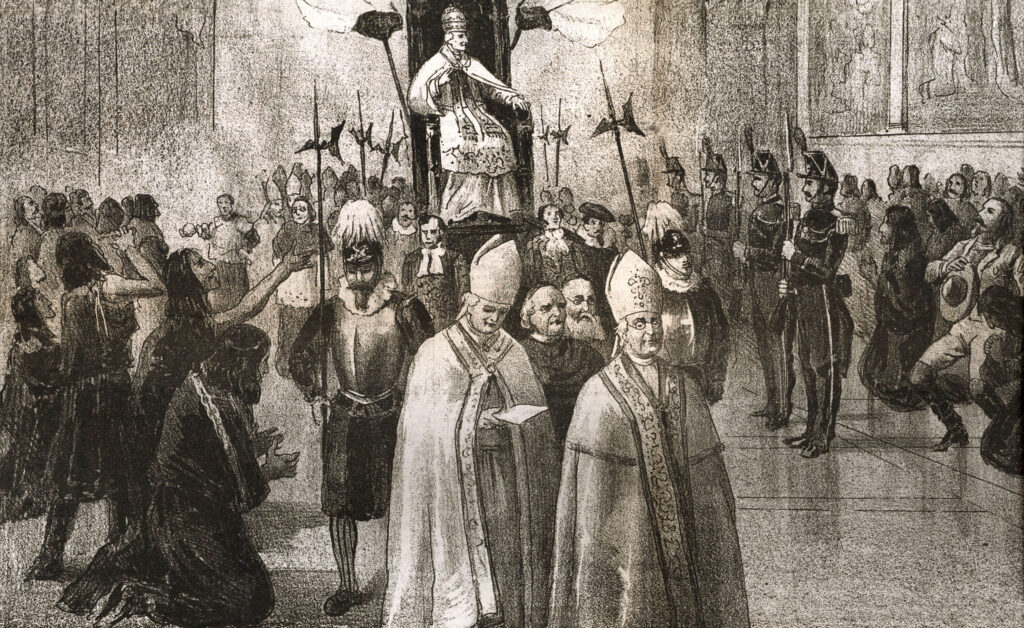
An article in the next morning’s New York Herald described the meeting as “one of the strangest spectacles ever seen within the venerable walls of the Vatican,” adding it took place “in the midst of the scene of supreme splendor, crowded with the old Roman aristocracy and surrounded with the walls immortalized by Michelangelo and Raphael.” American Indians with painted faces, clad in blankets and feathers and carrying tomahawks and knives, must have been an engaging if disconcerting sight as they knelt and made the sign of the cross while the pope blessed them. The newspapers presented Cody’s Indian performers, most of whom were Catholic, as “civilized,” though one Sioux woman reportedly fainted from the excitement as the “medicine man sent by the Great Spirit” passed by. Other accounts had one of the Sioux greeting the pope with a war whoop, kneeling to receive the blessing and then rising again with a whoop, enough to either “make the pope slightly pale” or “wrest an intrigued smile from him.” The parties then exchanged gifts. Buffalo Bill presented Leo a bouquet and a garland of flowers mirroring his coat of arms, while the pope gave Cody rosaries and medals bearing his pontificate. Leo’s gifts may have had the desired effect, as on Jan. 9, 1917, the day before his own death, Buffalo Bill converted to Catholicism.
“It has been a much greater success than we had hoped for,” Cody said of the stopover in the capital. “They said they had not had so great excitement in Rome since the days of Titus.”
On March 12 the Wild West began an eight-day run in Florence, where, despite poor weather, ticket holders from towns as widely scattered as Sienna, Empoli, Livorno, Pisa, Pontassieve, Prato and Pistoia packed the amphitheater. The show also hit Bologna, Milan and Verona. One day in mid-April Buffalo Bill and his top billing sharpshooter, Annie “Little Sure Shot” Oakley, hired a carriage and went to Venice, where an uncharacteristically nervous Oakley balked at riding a gondola. An Indian remained ashore with her as a bodyguard while Cody and others hopped aboard to take in such timeless sights as the 11th century St. Mark’s Basilica (a cathedral housing the remains of the namesake evangelist and gospel writer) and the 14th century Doge’s Palace (a onetime residence for the dukes who ruled Venice between 726 and 1797 and whom Cody compared anachronistically to U.S. presidents). Back ashore the reunited party ate fried fish.
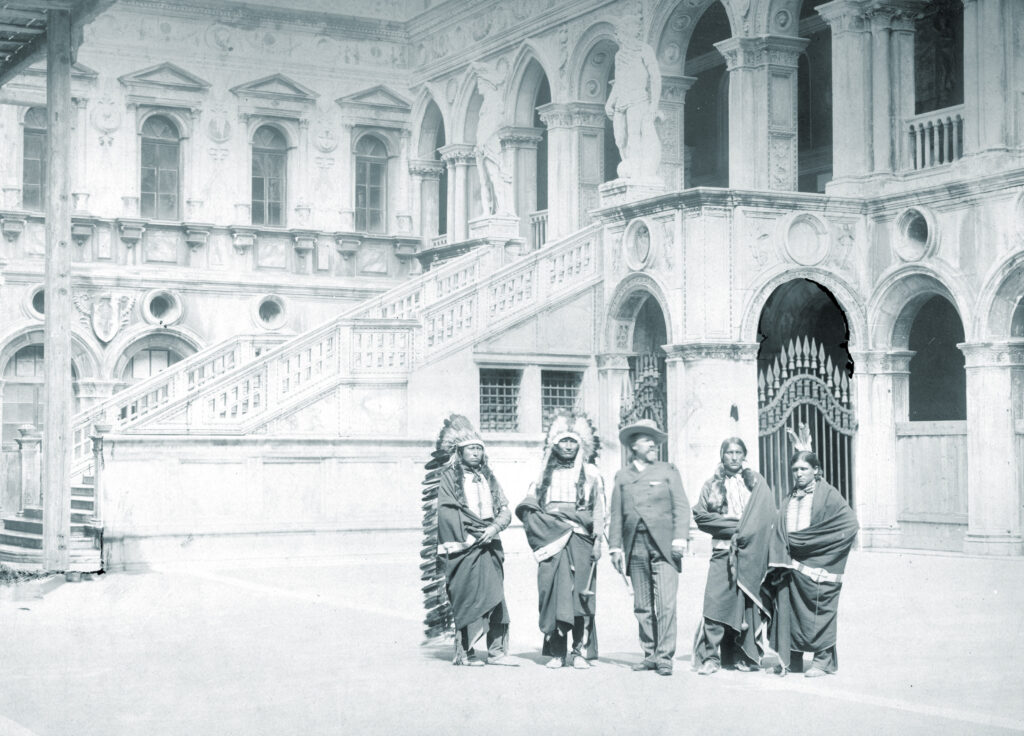
After performing in Paris in 1905, Cody’s globe-trotting show, rebranded as Buffalo Bill’s Wild West & Congress of Rough Riders of the World, opened its second Italian tour in Genoa on March 14, 1906. Other tour stops included Rome, Florence, Milan, Naples, Bologna, Turin, Livorno, Pisa, Parma, Ravenna, Verona, Como and two dozen other towns. For one day only, April 27, the troupe performed in Asti, this author’s small hometown. The tour closed May 11 in Udine (some may argue for Trieste four days later, but that Italian town on the far northeastern border was part of the Austro-Hungarian empire until 1918).
Promoters in Rimini, on the Adriatic coast of northern Italy, put up a massive poster to advertise the show’s April 11 tour stop. It worked like a charm, drawing a crowd of more than 10,000 to the two-hour performance. On April 21 the show stopped in the Piedmontese town of Alessandria, again bringing a flood of spectators eager to see the drama of the American frontier come to life. Though Alessandria’s population numbered just 7,000, the two Saturday shows packed the stands with 30,000 ticket holders.
Weeks in advance of the show’s arrival in Turin, capital of the northwestern Piedmont region, local newspapers ran daily dispatches about the Wild West. “Colonel Cody spared nothing to let the people of Turin know that the arrival of his crew and the staging operations constituted an interesting spectacle in themselves,” wrote La Gazzetta del Popolo on April 5. Two weeks later the paper shared another breathless tease:
“The celebrity of the plains, the king of all, will reproduce among us the deeds accomplished across the American continent, will show himself in the ability to kill the Sioux and will end the show with the apotheosis of peace and the dance of the nations.”
When the show finally rolled into Turin on April 22, the wagons, livestock and most performers encamped on a sprawling tract of 40,000 square acres, while Cody himself and other troupe members stayed in town on via dei Pellicciai (“Furriers Street”). The latter district’s delighted residents took to singing a rhyming refrain in Corsican dialect: “Alé, alé, anduma a balé, ch’a j’é l’America an via dij Plissè!” which roughly translated means, “Come on, come on, let’s go dance now that America is in Furriers Street!” Buffalo Bill reportedly liked the tune so much that he sang it during the final performance in Turin.
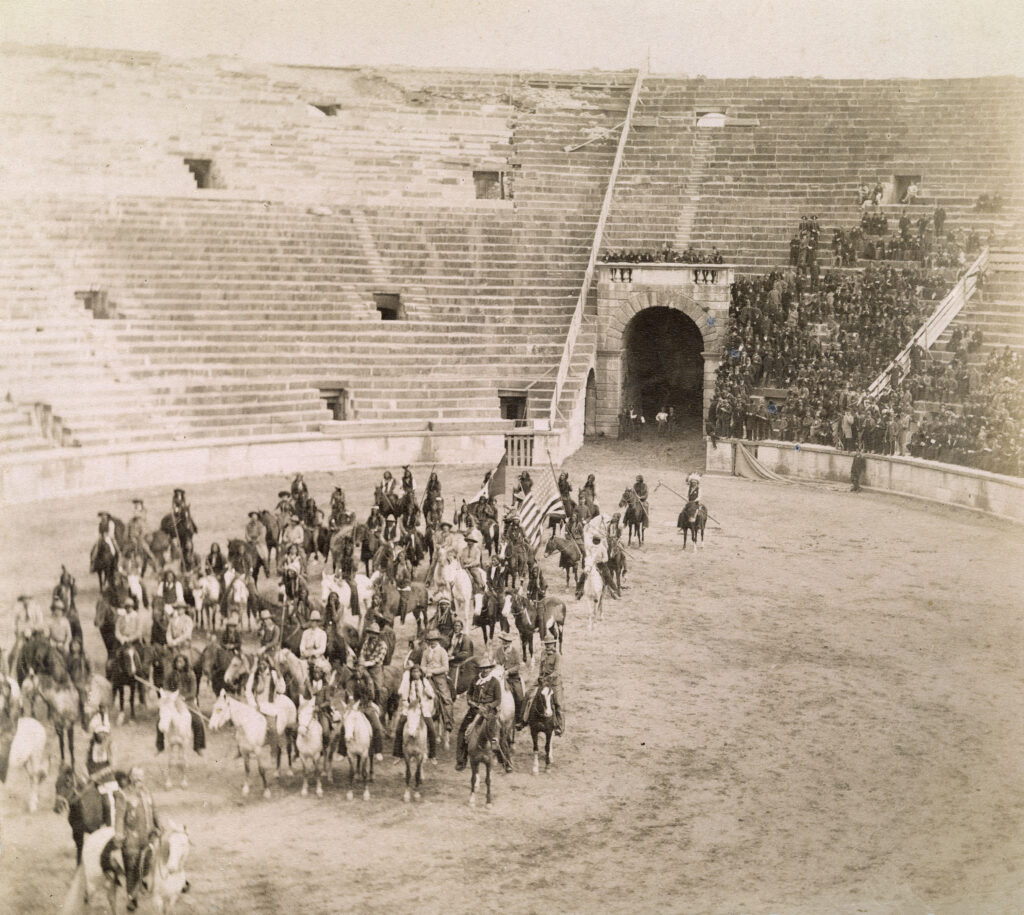
After wrapping up its tour of Italy in mid-May, the Wild West headed east to Austria, the Balkans, Hungary, Romania and Ukraine before returning through Poland to Bohemia (the present-day Czech Republic), Germany and Belgium. By the time Buffalo Bill gave his farewell performance of the 1906 season in Ghent on September 21, he’d become an international celebrity, and kids on street corners across Europe were playing cowboys and Indians.
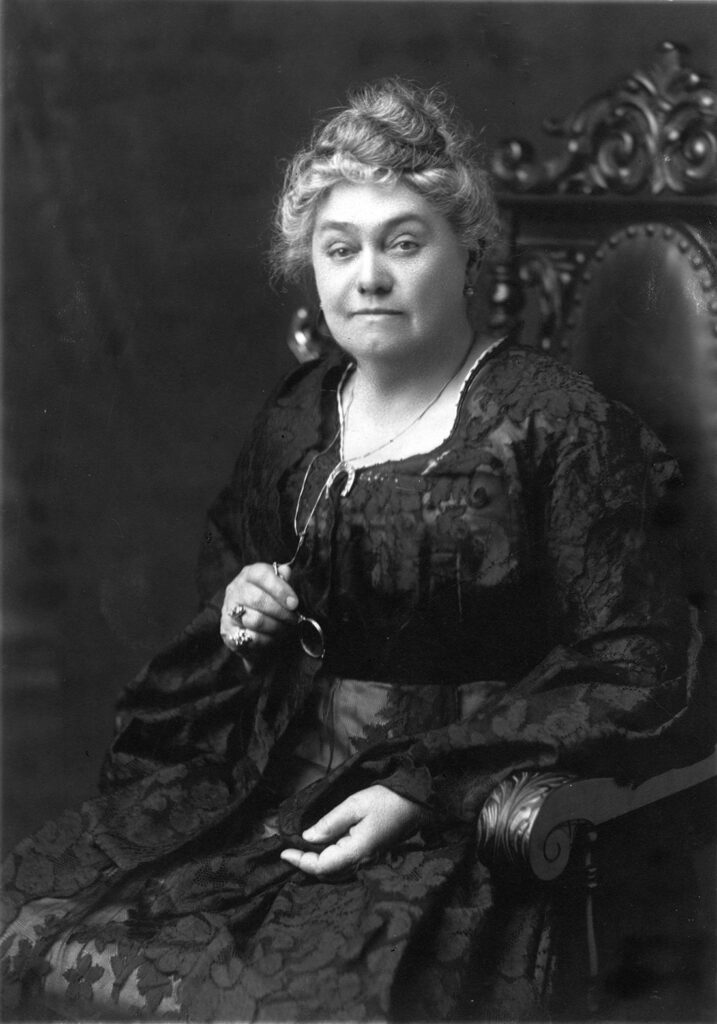
Buffalo Bill’s tours of Italy certainly had a profound and lasting influence on the Italian vision of the American West (think “spaghetti Westerns” and replica firearms). Cody himself, however, had only tenuous connections to Italy. On March 6, 1866, the 20-year-old Union Army teamster had married Missouri native Louisa Frederici (1844–1921), but her family had its roots in the Lorraine region of northeastern France. Buffalo Bill did name his favorite Springfield Model 1866 trapdoor rifle “Lucretia Borgia,” but that is thought to have been a lark. The illegitimate daughter of a future pope, the namesake Italian noblewoman rose to prominence during the Renaissance. Rumored to have poisoned several lovers, Lucretia Borgia was both beautiful and deadly. Likely hearing her name in passing, and doubtless regarding his Springfield as beautiful and deadly (at least to elk and bison), Cody had Borgia’s name inscribed on the rifle’s lock plate. (What remains of the rifle is on display at the Buffalo Bill Center of the West in Cody, Wyo.)
When he set out in the entertainment world, Cody appeared onstage with Giuseppina Morlacchi (1836–86), a celebrated prima ballerina and popular dancer from Milan, who made her American debut in New York City in October 1867. By December 1872 she had joined the cast of dime novelist Ned Buntline’s touring Western melodrama Scouts of the Prairie, co-starring Buffalo Bill and fellow scout John Baker “Texas Jack” Omohundro, whom Morlacchi would marry the following summer. Another Italian, Naples-born photographer Carlo Gentile, snapped and sold promotional cartes de visite of cast members, while his adopted Apache son appeared onstage. In 1873 Buntline left the troupe, and Cody enlisted friend James Butler “Wild Bill” Hickok to join the aspiring showman, Morlacchi and Texas Jack in a new touring play called Scouts of the Plains. The productions served as a training ground for Buffalo Bill’s Wild West and his later success across the ocean blue.
Wild West aficionado and artist Lorenzo Barruscotto hails from Asti, in the Piedmont region of northwest Italy. For further reading he recommends Four Years in Europe With Buffalo Bill, by Charles Eldridge Griffin, as well as the Italian language books Buffalo Bill in Italia, by Mario Bussoni, and Quando Buffalo Bill venne in Italia, by Nicola Tonelli.
This article was originally published in the Spring 2024 issue of Wild West.

